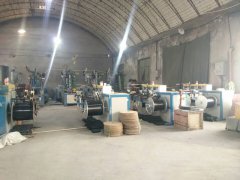
We are here to help.Easy ways to get the answers you need.
Drip irrigation system can supply water through pipeline system, make irrigation water into drops, evenly, regularly and quantitatively infiltrate crop root development area, so that the main root system of crops always keep loose and best water content, with the effect of saving fertilizer, water, labor, salt pressure and improving crop yield, which is a cash-saving irrigation technology in the world today. It can be widely used in field crops, such as cotton, etc., greenhouse, fruit forest, garden, greening, forestry, grass industry, etc. The raw materials for producing drip irrigation belt are mostly mixed raw materials such as high pressure polyethylene, linear polyethylene, low pressure polyethylene, black masterbatch and anti-aging agent.
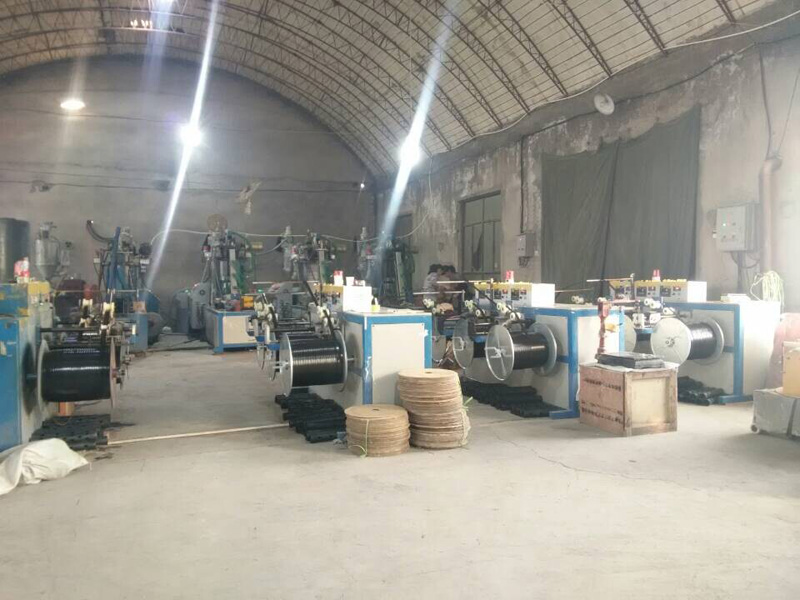
The production process of drip irrigation belt is as follows: firstly, the raw materials qualified by inspection are proportioned and mixed evenly in certain ratio, then extruded in the extruder, heated and plasticized, filtered, led to the film forming wheel, and pressed by the pressure belt wheel, entered into the cooling and traction device, through the air valve, laser diameter measuring instrument and air replenishment device to adjust the bubble diameter to the required range, then rolled, packaged and warehoused.
Common materials: qualified polyethylene and other plastic granules
Process characteristics: high output, high temperature, high filtration accuracy, high viscosity, low pressure fluctuation, high stability and reliability requirements
Heating temperature: 200~280 ℃
Heating pressure: 3.0-10.0 MPa
Output: 100-1,000 kg/hr
Batte product solutions: melt metering pump + single plate screen changer / mesh belt screen changer / backwash screen changer

Extruder and pelletizer for water hose drip irrigation belt, including motor, gearbox, barrel screw, first long-lasting filter device, melt pump, screen changer, extrusion die; characterized in that the motor is connected to a gearbox, the output end of the gearbox is connected to a barrel screw, and the barrel screw is provided with a feed port; the other end of the barrel screw is equipped with a first long-lasting filter device; the first long-lasting filter device is connected to the melt pump through a connecting runner; the other end of the melt pump is connected to the melt pump. The other end of the melt pump is connected to the screen changer through the connecting runner; the other end of the screen changer is connected to the extrusion die head; the extrusion die head is divided into extruder die head and drip irrigation belt die head, which can be used as either a granulator or an extruder by changing the extrusion die head; a pressure sensor is installed on the connecting runner to monitor the pressure in the connecting runner.
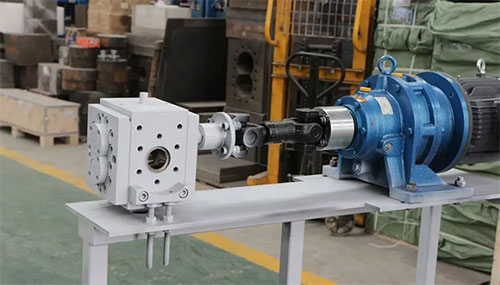
Melt pumps are an indispensable part of rubber and plastic extrusion lines, so how do melt pumps achieve conveying, metering, flow stabilization and pressure boosting? Let's analyze the working principle of melt pump in detail.
Principle one: volumetric conveying - metering, steady flow,
The melt pump has excellent metering function. In the gear meshing area against the pump's outlet side (discharge area), the teeth of the two gears and tooth grooves continuously into the closed, or meshing state, the space in the discharge area is constantly decreasing, the melt in each tooth groove, is forced out. The melt pump's gears rotate every week, the discharge volume is constant. In this way, the continuous discharge and metering of the melt is achieved.
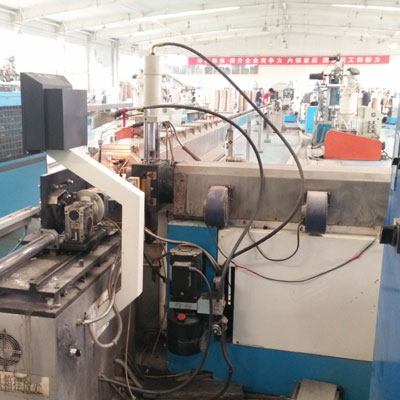
Principle No. 2: Pressure boosting and pressure isolation - pressure stabilization
When the melt pump works, when the material at the outlet of the melt pump is subject to the resistance generated by the molding mold, the gear in the melt pump is like a piston in a cylinder barrel, which exerts an extrusion effect on the melt in the discharge area to realize the pressurization function of the melt pump. At the same time, the gears in the pump are equivalent to a rotating barrier, which can effectively block the pressure fluctuation and flow fluctuation of the feed zone to the discharge zone.

Drip irrigation belt production screen changer generally adopts Batte single plate single station screen changer, generally 65 and 75 machines use Batte single plate quick screen changer, which adopts the way of stopping to change the screen, high speed machines use Batte single plate screen changer, because it is stopping to change the screen, there is no requirement for the speed of changing the screen, from the price cost consideration, also can use small hydraulic station unit to change the screen, already and the main domestic drip irrigation belt equipment manufacturers widely, widely used in the production of drip irrigation belt, has been recognized and praised by the majority of customers.
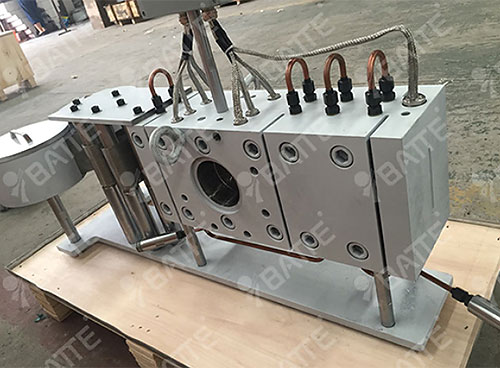
If the requirement of continuity is high, you can consider mesh belt type automatic screen changer, continuous production, automatic screen walking, no manual screen changing, no impact on production. It is the upgraded mesh changer for future drip irrigation belt production. Or use automatic backwashing screen changer. Automatic backwashing screen changer relies on plastic melt flowing into the screen changer body through the backwashing body to realize impurities being filtered out by the screen; the backwashing function designed by Zhengzhou Batt can realize online backwashing of the screen, and the screen can be recycled to reduce production costs. The basic structure of the automatic backwashing screen changer includes: screen changer body, plunger, filter screen, porous plate, screen support, backwashing body, etc. The driving part adopts hydraulic cylinder. The automatic backwashing screen changer is especially suitable for recycling and processing of waste plastics, with the advantageous features of high backwashing efficiency, avoiding production stoppage, improving production capacity and saving production cost; no change in material flow pressure, stable flow rate, no instantaneous flow break and no melt leakage when conducting screen changing operation.
